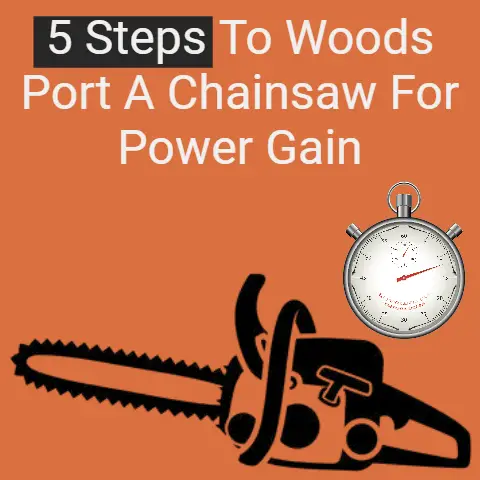Poulan Chainsaw Bar Compatibility (3 Key Facts)
Remember those Saturdays spent in the backyard with family, the scent of freshly cut timber wafting through the air? I can still hear the rhythmic hum of my dad’s Poulan chainsaw as he worked tirelessly to clear fallen branches after a storm. Those moments weren’t just about yard work; they were about learning the art of precision and care. Fast forward a few decades, and I find myself passing the same lessons onto my kids, using that trusty Poulan. Today, let’s dive into something every chainsaw enthusiast should know: Poulan chainsaw bar compatibility.
In-Depth Look at Poulan Chainsaw Bar Compatibility
Fact 1: Size Matters Immensely
Understanding Bar Length and Its Impact
Chainsaw bars, like a good pair of boots, need to fit just right to work effectively. You wouldn’t want boots too big or too small—they’d just lead to blisters or trips. Similarly, using an inappropriate bar size can cause your chainsaw to underperform or even damage it. Let’s break it down:
- 14-inch Bars: These are your go-to for light tasks such as pruning branches and cutting small logs. They’re nimble and easy to handle, making them perfect for beginners or those who value maneuverability over power.
- 16-inch Bars: A great all-rounder for most home projects, this size balances power and control. Whether it’s trimming limbs or tackling medium-sized logs, a 16-inch bar offers versatility without weighing you down.
- 18-inch Bars: When you need to take down small trees or process larger firewood, an 18-inch bar steps up to the plate. It provides the reach and cutting power needed for more demanding tasks without being overly cumbersome.
Personal Insight: I remember once trying to tackle a large oak with an 18-inch bar. The chainsaw handled it like a champ, slicing through the wood smoothly. However, the key was ensuring the bar was sharp and compatible with the chain pitch and gauge.
Measuring Your Bar Correctly
To measure your bar, you don’t need fancy tools—just a tape measure will do. Measure from the tip of the bar to where it exits the saw’s casing. This straightforward method ensures you get an accurate measurement every time.
The Risks of Mismatched Bar Sizes
Using a bar that’s too long can strain your chainsaw’s motor, while a short bar might not give you the reach you need. It’s like trying to cut steak with a butter knife—it just doesn’t work well. Stick to your chainsaw’s manual recommendations for optimal performance.
Fact 2: Chain Pitch and Gauge Must Match
Demystifying Chain Pitch
The pitch is critical as it dictates how well the chain fits around the sprocket and bar. It’s calculated as the distance between any three consecutive rivets divided by two. Common pitches include:
- 3/8” Pitch: Known for its robustness, it’s typically used in larger chainsaws designed for heavy-duty tasks.
- .325” Pitch: Often found in mid-sized saws, providing a balance between speed and power.
Having the wrong pitch can cause derailment of the chain—a dangerous situation that no one wants to experience.
Understanding Gauge: The Unsung Hero
Gauge refers to the thickness of the drive links that slot into your guide bar’s groove. Common gauges are:
- .050” Gauge: Standard on many saws due to its blend of strength and flexibility.
- .058”/.063” Gauge: Found on larger saws for heavy-duty work where added durability is needed.
Verifying Compatibility
- Consult Your Manual: It’s not just there for decoration! Your manual is the ultimate guide for ensuring all parts fit perfectly.
- Inspect Existing Components: Many bars and chains have markings indicating their pitch and gauge. If not visible, double-check with calipers or consult a professional.
- Seek Expert Advice: When in doubt, don’t hesitate to ask someone at your local hardware store—they often have insights that can save you time and hassle.
Fact 3: Quality Replacement Parts Are Key
Original vs. Aftermarket Parts
While it might be tempting to go for cheaper, off-brand parts, consider this: using original Poulan parts ensures longevity and performance tailored specifically for your model.
- Durability: Genuine parts are made to withstand stress and last longer.
- Performance: They’re tested rigorously under various conditions to ensure safety and efficiency.
Anecdote: I once tried an off-brand chain on my Poulan during a busy season, thinking I’d save some cash. The chain dulled quickly, causing frustration and wasted time during critical work hours.
Tips for Choosing Aftermarket Parts Wisely
If you opt for aftermarket parts:
- Research Brands: Look for brands with positive reviews and a history of reliability.
- Check Compatibility Specifications: Ensure they meet Poulan’s pitch and gauge requirements meticulously.
Detailed Equipment Requirements
Before you jump into replacing or modifying your chainsaw bar, get your gear ready:
- New Poulan-Compatible Bar: Make sure it matches your saw model.
- Matching Chain: Verify it has the correct pitch and gauge.
- Screwdriver/Wrench: Needed for removing bar nuts.
- Protective Gloves: Essential for handling sharp components.
- Safety Goggles: Protects eyes from debris during operation.
Prerequisite Knowledge
Understanding your chainsaw’s anatomy—knowing what each part does and how they interact—is vital before making any changes.
Step 2: Remove the Old Bar
- Loosen Bar Nuts: Use a wrench or screwdriver based on your model.
- Remove Cover Plate: Gently take off the cover plate to expose the bar.
- Detach Chain Carefully: Slide off the old bar and chain without forcing them—components should come apart smoothly.
Step 3: Install the New Bar Correctly
- Position New Bar Accurately: Align it with both the tensioner pin and mounting studs.
- Attach Chain Securely: Wrap it around the sprocket and bar, ensuring it sits correctly in the groove.
- Replace Cover Plate Firmly: Fasten it back on securely but not overly tight.
- Tighten Nuts Appropriately: Ensure they’re tight enough to hold everything in place but allow for adjustment flexibility.
Step 4: Adjust Chain Tension Precisely
Proper tension is crucial—there should be slight slack when pulling up on the chain but no sagging when released back into position.
A: While possible, using a longer bar than specified can overstrain your motor and compromise cutting efficiency—not worth risking your tool’s lifespan or safety.
Q: How often should I replace my chainsaw bar?
A: Replace it when you notice visible wear (such as bending or cracking) or if it no longer holds tension properly—a sign that its internal components might be compromised.
Q: Is mixing brands for bars and chains safe?
A: Mixing brands can be safe as long as pitch and gauge match perfectly across components; however, sticking to one brand ensures optimal compatibility.






